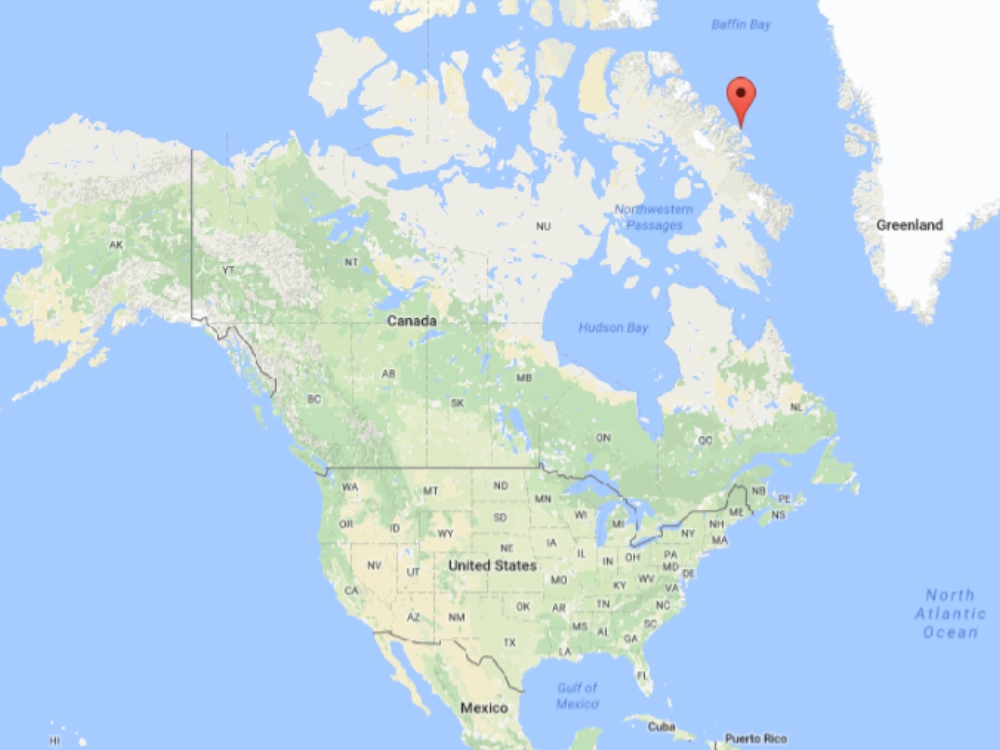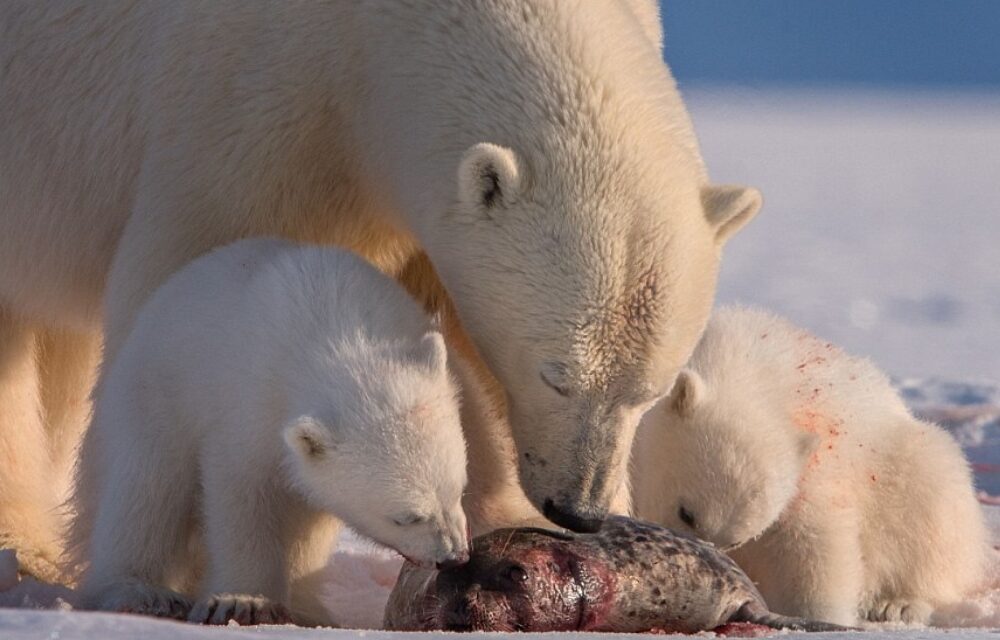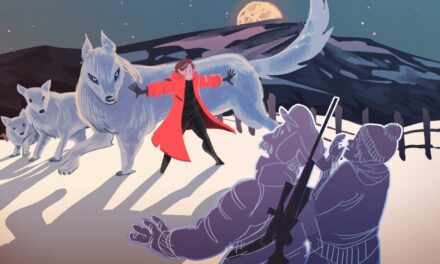Stevie can’t find a buyer. For more than two years, the hunter’s last polar bear hide has idled under a layer of condensed ice in his village’s communal freezer. Stevie’s last buyer was a Japanese man in Vancouver. “He paid me $5,000 for it,” recalls the 64-year-old who resides in Nunavut, Canada’s northernmost territory.

Clyde River, Nunavut
“I started hunting when I was around seven,” he says in broken English. His first language is Inuktitut, and like most Inuit men and women, he learned how to hunt from watching his elders. “My older brothers used to bundle me up and put me in the back of their sled,” Stevie recalls with uncanny clarity. His memory is as sharp as his eyesight. If Stevie was a bragging man, he could boast of being able to spot wildlife with his naked eyes faster than most people can figure out how to adjust their high-powered binoculars.
But in typical Inuit fashion, humility courses through Stevie’s veins. Unless you ask, he’ll never divulge how many polar bears he’s killed (six) or how many narwhal he’s caught (too many to count). He doesn’t carry around 5×7’s of his biggest caribou, and he seems to get as much pleasure from bagging a 10 lb. Arctic hare as he does a 4,000 lb. walrus.
His favorite animal to hunt, however, is the seal. It’s plentiful, tasty and there is a fabulously cruel element of surprise. Using leathery hands that have taken many, many lives, he describes the magnitude and utility of the canvas contraption he hides behind while sneaking up on his prey. His animated expressions and movements are captivating. He makes you want to be on the ice with him. Until it’s time to pull the trigger.
Stevie’s gun of choice is the Ruger No.1 .303. While he uses traditional Inuit hunting practices like the canvas contraption and dressing in seal skins to sneak up on baby pups, he’s grateful for technology. When he was 18 he asked his father if he could go hunting for polar bear. His father said, “Sure, but if you kill one, you’ll have to pack it out yourself.” Stevie soon understood why his father made that contingency. Hauling that 1,000 lb. bear out by hand and dogsled took Herculean efforts.
Nowadays Stevie uses his Ski-Doo, and he knows how lucky he is to have 100 horsepower beneath him. Out-of-town polar bear permit-holders can’t use them. Ski-Doos are off limits for non-residents who typically pay between $30,000 – $60,000 to hire licensed outfitters like Stevie to take them polar bear hunting. Assuming they can even score a highly sought after tag, they‘re required to hunt by dogsled—to keep Inuit tradition alive, force them to hire local guides and finally, minimize their advantage. After all, there are only between 20,000 – 25,000 polar bears left according to the World Wildlife Foundation.
In Qikiqtarjuaq, Stevie’s community of 500 people, about 12 permits are issued each year. In most years at least 200 residents apply for a permit. If his name is drawn, Stevie has one day by Ski-Doo or three days by dogsled to kill a bear. And he doesn’t get to pick the day. The Government of Nunavut Department of Environment does. “If I’m working, and I get a call that I got a permit, I tell my boss I’ll be back soon,” explains Stevie, a school counselor Monday through Friday.
When asked if he’s ever dreamed of big game hunting anywhere else in the world, such as Africa, Stevie’s response is typical of the Inuit who seldom travel outside Canada. “One time, I want to go moose hunting at Ross River,” he responds in a way that suggests wishful thinking. Ross River is in the Yukon, two territories west of Nunavut. When asked if the retreating ice has noticeably affected his hunting, Stevie doesn’t hesitate to say no. In fact, he says it so quickly it’s clear “climate change” is not in his vocabulary. He’s not concerned about global warming.
But, he is concerned about finding a buyer for his two-year-old polar bear hide. The father of three already has a polar bear suit, made from one of his first hides, and he prefers to have $5,000 in his pocket instead of a fur sitting in a freezer. Money is the main reason he hunts polar bear. After all, their meat is not that desirable. Some parts such as the liver and stomach are actually deadly to humans. Often, the meat goes to the sled dogs. The hide and skull are sold to collectors, and ideally, the only part of the kill the hunter keeps is its manhood.
“For the hunter, the penis is the prize,” says Stevie, a twinkle forming in his exaggerated almond-shaped eyes.





